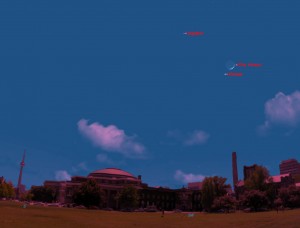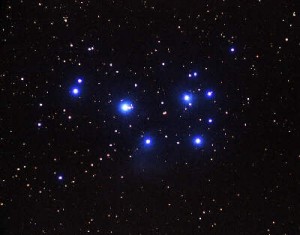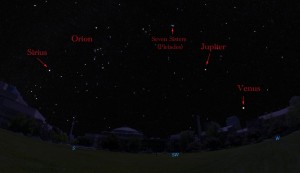Venus, Jupiter and the Moon will converge tonight and tomorrow night (Saturday, Feb. 25 and Sunday, Feb 26) for a beautiful alignment. Look southwest, between 6:00 pm and 8:00 pm.
Check these links to the Toronto Star, and SpaceWeather.com for more information.
Toronto Star: Venus-Jupiter-Crescent Moon align for triple threat for star gazers




